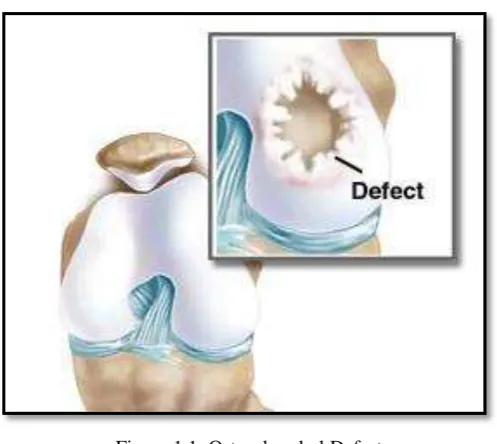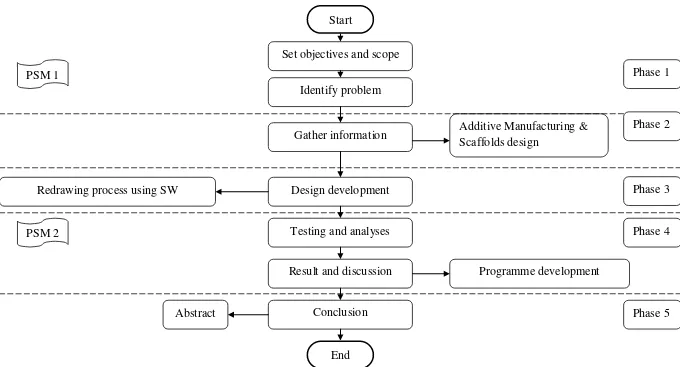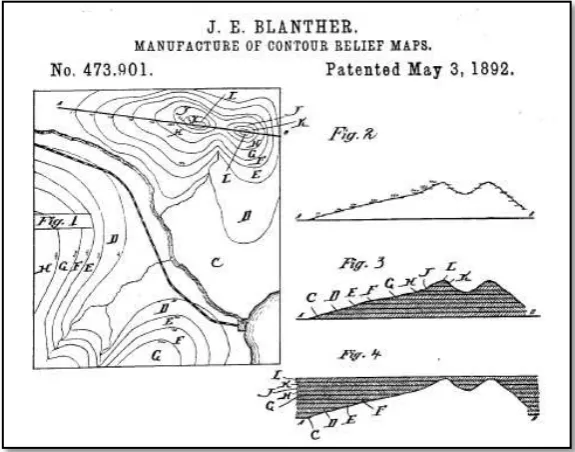UNIVERSITI TEKNIKAL MALAYSIA MELAKA
THE DEVELOPMENT OF SCAFFOLD DESIGN
SELECTION SYSTEM
This report submitted in accordance with requirement of the Universiti Teknikal Malaysia Melaka (UTeM) for the Bachelor Degree of Manufacturing Engineering
(Manufacturing Design)
By
SYARFADILA EZURIDA BT. SHAARI B051010096
881103055526
UNIVERSITI TEKNIKAL MALAYSIA MELAKA
BORANG PENGESAHAN STATUS LAPORAN PROJEK SARJANA MUDA
TAJUK: The Development of Scaffold Design Selection System
SESI PENGAJIAN: 2012/13 Semester 2
Saya SYARFADILA EZURIDA BT. SHAARI
mengaku membenarkan Laporan PSM ini disimpan di Perpustakaan Universiti Teknikal Malaysia Melaka (UTeM) dengan syarat-syarat kegunaan seperti berikut: 1. Laporan PSM adalah hak milik Universiti Teknikal Malaysia Melaka dan penulis. 2. Perpustakaan Universiti Teknikal Malaysia Melaka dibenarkan membuat salinan
untuk tujuan pengajian sahaja dengan izin penulis.
3. Perpustakaan dibenarkan membuat salinan laporan PSM ini sebagai bahan pertukaran antara institusi pengajian tinggi.
(Mengandungi maklumat TERHAD yang telah ditentukan oleh organisasi/badan di mana penyelidikan dijalankan)
(TANDATANGAN PENULIS)
DECLARATION
I hereby, declared this report entitled “The Development Of Scaffold Design Selection System” is the results of my own research except as cited in the
references.
Signature :
Author’s Name : Syarfadila Ezurida Bt. Shaari
APPROVAL
This report is submitted to the Faculty of Manufacturing Engineering of UTeM as a partial fulfillment of the requirements for the degree of Bachelor of Manufacturing Engineering (Manufacturing Design) (Hons.). The member of the supervisory is as follow:
i
ABSTRAK
ii
ABSTRACT
iii
DEDICATION
Dedicated to me beloved mother Dearest siblings
Honourable lecturers Loyal friends
iv
ACKNOWLEDGEMENT
Alhamdullilah, for I am grateful to ALLAH S.W.T for giving me enough strength and courage to finally finish up this final year project and its report. For without the help He has given along with His permission, all may not have been completed.
With a sincere heart, I would like to thank to my dear supervisor, Dr. Shajahan Bin Maidin with all his guidance and commitment in guiding and supporting me in completing this study. Dr. Shajahan has given me a lot of innovative ideas in solving all the obstacles which rises. Once again I would like to thank him for all the comments and amendments he has given me with his patience towards my deficiency.
I also would like to express my greatest gratitude for my entire classmate especially Wan Nasuha W Malek and Nor Ashraf Muhtar for their assistance, and to those who have been helping directly or indirectly in completing this final year project as well as its report. All of my hard work will meant nothing without the inspirational and motivational from all of them.
And lastly, I would like to give my thanks to the patience and the support from my mother, Sarimah Binti Dollah as well as to my beloved family. For they, has given me the strength to complete this report entirely and I will always be grateful for having them as my family.
v
List of Abbreviations, Symbols and Nomenclatures xii
CHAPTER 1: INTRODUCTION
2.2. Additive Manufacturing (AM) 9
2.2.1. Basic Steps of AM 11
2.2.2. Advantages and disadvantage of AM 14
2.3. AM Techniques 15
2.3.1. Liquid based process 16
2.3.2. Powder Based Process 18
2.3.3. Solid Based Processes 20
vi CHAPTER 3: TISSUE ENGINEERING AND OSTHEOCHONDRAL
INJURIES
3.1. Introduction 24
3.2. History 26
3.3. Scaffolds 30
3.4. Application of TE and Scaffolds 32
3.5. Osteochondral Defect 34
3.6. Current Treatment Techniques 36
3.7. Summary 38
CHAPTER 4 - METHODOLOGY
4.1. Introduction 39
4.2. Project Planning 41
4.2.1. Project Planning: Gantt Chart 43
4.3. Identify Existing Design 45
4.4. Remodelling Of Existing Structure 46
4.5. Database Programme 49
4.6. Programme Interface 50
4.7. Summary 53
CHAPTER 5 - RESULTS AND DISCUSSION
5.1. Introduction 54
5.2. Scaffold model 54
5.2.1. Stacked Base Structure 56
5.2.2. Boxed Base Structure 57
5.2.3. Cylinder Based Structure 58
5.2.4. Structure Based Structure 59
5.3. Scaffold Design Selection System 60
5.3.1. Front page – Page 1 60
vii
5.3.3. Health Details - Page 3 62
5.3.4. Lifestyle Details - Page 4 63
5.3.5. Loading Page – Page 5 65
5.3.6. The Result’s Page – Page 6, 7, 8 and 9 66 5.3.7. The Closing Page – General Information 73
5.4. Discussion 75
5.5. Summary 76
CHAPTER 6 - CONCLUSIONS AND RECOMMENDATIONS
6.1. Conclusions 77
6.2. Recommendations 79
REFERENCES 80
viii
LIST OF TABLES
2.1 Historical development of RP and related technologies 10
4.1 Gantt chart for PSM I 43
4.2 Gantt chart for PSM II 44
5.1 Lifestyle questionnaire questions and reasons 64
5.2 Answers declaration 67
5.3 Answer’s range 67
5.4 Degradation Rate 67
ix
LIST OF FIGURES
1.2 Project Planning 5
2.1 Blanther patent to fabricate 3D relief map with layered method 7
2.2 Unfinished laminated tool 8
2.3 Photo-sculpture in Willeme studio 9
2.4 RP Wheel 11
2.5 Basic Process of RP 12
2.6 CMM for reverse engineering 13
2.7 Categorization of RP techniques 14
2.8 SLA machine 16
3.2 False Teeth Presumably Form 18thCentury 26
3.3 The application of pedicle flap 27
3.4 The Dolly Diagram of Cloning Process 29
3.5 Before and After the TKR surgery 30
3.6 Allogeneic Bone Marrow Transplant 31
3.7 Mouse with Human Ear 32
3.8 Vascular Scaffold Using Tissue Engineered 33
3.8 (a) Before Seeding 33
3.8 (b) After seeding, the scaffold covered with human cell 33
x
3.10 Joint Replacement Procedures in US, 1996-2004 35
3.11 General Structure of a Mammalian Bone 36
3.12 Sub-Chondral Bone Position 37
3.13 Osteochondral Graft Technique 37
4.1 Overall flow chart 41
4.2 An example of existing scaffold with cylindrical shape 46
4.3 A library of designed scaffold unit cells 46
4.4 Example of Scaffold structure 47
4.5 Remodelled of the structure based on the example 47
4.6 3D Drawing Process Flow 48
4.7 Process Flow Chart to Create a Database 50
4.8 The Flowchart for VB Programme’s Development 52
5.1 Femur’s model 55
5.4 Cylinder based structure 58
5.4 (a) Isometric view 58
5.4 (b) Front view 58
5.4 (c) Side view 58
xi
5.5 Structured based model 59
5.5 (a) Isometric view 59
5.5 (b) Front view 59
5.5 (c) Side view 59
5.5 (d) Top view 59
5.6 The Introduction Page 61
5.7 Personal Details form 62
5.8 Health Details form 63
5.9 Lifestyle questionnaire 65
5.10 Loading page’s interface 66
5.11 Hidden interface for loading page 69
5.12 Box Detailed Structure Page 70
5.13 Cylindrical Detailed Structure 71
5.14 Stack Detailed Structure 72
5.15 Structured Detailed Structure 73
xii
AM - Additive Manufacturing
ACI - Autologous Chondrocytes Implantations ALP - Alkaline phosphate
BMI - Body mass index
C++ - C plus plus programming language
CPP - Calcium Polyphosphate
CAD - Computer Aided Design
CATIA - Computer Aided Three-dimensional Interactive Application CMM - Coordinate Measuring Machine
ECM - Extracellular Matrix FEM - Finite Element Mesh
FF - Freeform Fabrication
xiii
GH - Growth Hormone
HA - Hydroxyapatite
HLA - Human Leukocyte Antigens LOM - Laminated Object Manufacturing LSA - Linear Static Analysis
MIT - Massachusetts Institute of Technology
NC - Numerical Control
PCL - Poly - Ɛ -Caprolactone
PH - Parathyroid Hormone
PLA - Poly-Lactic Acid
PLA/HA - Poly-Lactic Acid/Hydroxyapatite PLGA - Poly Lactic-Co-Glycolic Acid PLLA - Poly-L-Lactic Acid
RP - Rapid Prototyping
SLS - Selective Laser Sintering SGC - Solid Ground Curing SLA - Stereolitography
SQL - Structured Query Language STL - Stereolitography file
SW - Solidworks
TE - Tissue Engineering
THR - Total Hip Replacement TKR - Total Knee Replacement
UV - Ultraviolet
UCSF - University of California San Francisco
1 This chapter introduces the project as well as briefly describe the aims, objectives and its scope. This chapter will also provide an overview of the project’s implementation.
1.1. Introduction
Additive manufacture (AM) of scaffolds to promote the regeneration of human tissue is a study which will help to understand the characteristics for a scaffold in order to decide the design of the scaffold according to the customer’s preferences or suitability. Typically, the fabrication or production of these scaffolds will be done by using the AM technologies specifically with the laser sintering AM system.
Curl et al. (1997) has previously mentioned that more than 31,000 knee arthroscopies were needed in order to cover the Osteochondral or Chondral injuries which commonly and typically will affect the athletes who is active. In Figure 1.1, the picture show one of the types of fracture on the articular cartilage. This injury usually caused when the athlete twisted his or her knee badly. Direct trauma (sudden, forceful injury) to the inner or outer part of the femur at the knee also can lead to these lesions (Anatomy - Cartilage, 2008).
2
Figure 1.1: Osteochondral Defect
1.0 (Source :<
http://www.cartilagerepaircenter.org/patient-education/anatomy-cartilage.html>Accessed on: 7 November 2012, 2008)
These injuries are the result of when the articular cartilage (the smooth part of the bone) cracked into fragment or in the worst case scenario is when the bone breaks into the joint. When the bone breaks into the joint, the only possible treatment for this injury is a surgery on the knee in order to replace the cartilage with a knee implant made out of Titanium Alloy. However, this implant has a high risk of rejection, inflammatory responses and subsequent surgeries for implants replacement and adjustment (Batista et al., 2004).
Due to too many disadvantages and flaws to the implants surgeries, researcher has developed another alternative of inserting a temporary support called scaffold to the cartilage to encourage the bone cell to regenerate in order to fix the injuries his or herself (Granchi et al., 2008 and Outerbridge, 1995). However, the scaffold needs to be biocompatible to avoid stimulation of unwanted immune response from the human body (Hutmacher, 2000). The scaffold also has to fulfil a certain structure which will be reviewed later on in this report.
3 material injection, solvent casting and others to be used (Hutmacher, 2000). This is where the AM plays an important role. The method of layered manufacturing has allowed AM to be used to produce the scaffold in varying layer of characteristics.
With fixed constraints for the design of the scaffold, a few structure of scaffold will be discussed and compared in order to determine the structure of the scaffold which will be in high potential of assisting the bone tissue regeneration in the aspect of minimal time of regenerating and degradable with fulfilling the mechanical properties of the bone itself.
1.2. Problem Statement
Since the injuries of Osteochondral defect have affected many athletes, the scaffold of the articular cartilage has been widely used abroad. However, due to its wide usage, many types of scaffold design have been produce. The scaffolds in the market have different types and structure. This study of the different types of scaffold will help to determine which of the structures will be best and most helpful in the bone tissue regeneration and also will be able to sustain the force and pressure from the human activity while the bone tissue regenerates.
1.3. Aims
The aim of this project is the development of scaffold design selection system based on the manufacturing process of AM.
1.4. Objectives
4 a) To study the AM systems and the types of bone scaffold design
b) To design four bone scaffolds design using Solidworks (SW)
c) To develop, test and validate the system for the selections of the scaffold
1.5. Scope
Scope of this study covers the AM system such as the Selective Laser Sintering (SLS), Fused Deposition Modelling (FDM) system and the SW (Computer Aided Design) CAD software for the test and simulations of the scaffold structures. From four suggested designs, each design will be matched to the most suitable patient criteria according to the age, weight, total load and the hormone response from each patient by using a web based programme as the interface in order to ease up the scaffold selection.
1.6. Project Planning
5
6 This chapter will provide a preliminary insight regarding the history of AM, basic steps in AM system, and the techniques known to the public. This chapter also will provide information on the benefits of AM along with the limitations of AM.
2.1. History
According to Harris (2011), AM is “the process of joining materials to make objects from 3D model data, usually layer upon layer as opposed to subtractive manufacturing technologies”. Bourell et al. (2009) has mentioned that AM is known to be related to topography and photo sculpture. Both methods can be traced back to almost 150 years ago. Nowadays, the evolution of these methods has caused the birth of Freeform Fabrication (FF). According to Wohlers (2009), FF is the collection of technologies namely as rapid prototyping, rapid manufacturing and solid freeform fabrication.
2.1.1. Topography
In 1980, Joseph Blanther has created a method of layering for making a mould for topography relief maps (Blanther, 1982). According to the United States Geological Survey (2011), topography is a map that represents the Earth. Topography map usually will show the contours of Earth surface representing the elevation on the
7 surface of the land. Blanther (1982) explains that the topography was made by impressing topographical contour lines on a series of wax plates. Figure 2.1 shows the contour drawing to represent a hill based on the different state of its height.
Figure 2.1: Blanther patent to fabricate 3D relief map with layered method (Blanther, 1982)
In 1940, by following the same method, B.V Perera proposed the usage of cardboards stacked and pasted together to form a three dimensional map (Perera, 1940). In 1972, K. Matsubara of Mitsubishi Motors suggested the usage of photo-hardening materials for the topographical process (Matsubara, 1974). Photo-hardening is a process where refractory particles such as sand or graphite powder were coated with photopolymer resin. These particles then spread into layers and heated to form a coherent sheet. By using the mercury vapour lamp, the scanned sheet will harden a define portion of the sheet and the un-scanned or un-hardened portion will be dissolved by using solvents


